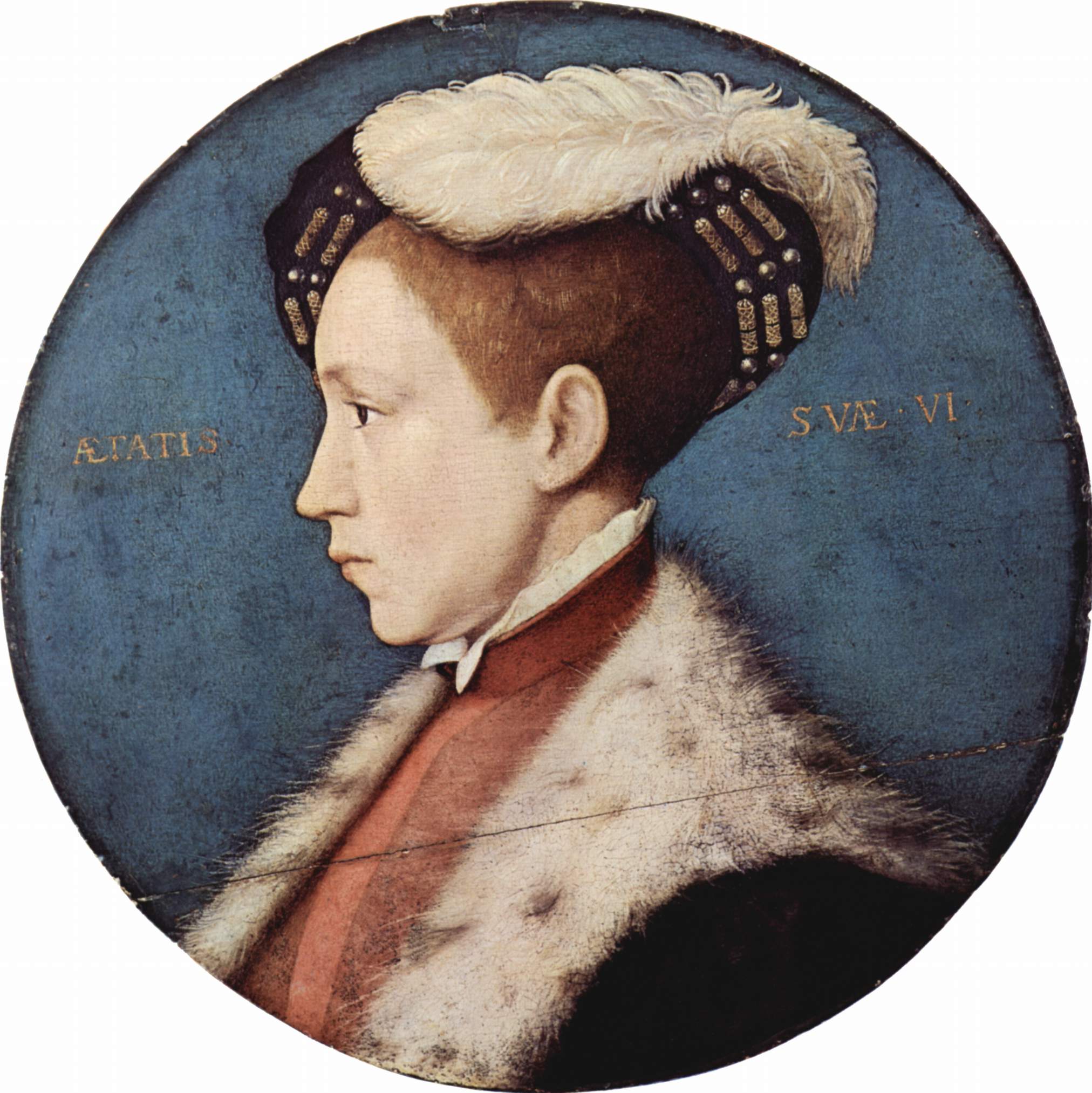Above: miniature portrait of Jane Seymour by Lucas Horenbout.
On this day in history, 4 June 1536, Jane Seymour, third consort of Henry VIII of England, was proclaimed Queen of England at Greenwich Palace. The herald and chronicler Charles Wriothesley reported that:
'the 4th daie of June, being Whitsoundaie, the said Jane Seymor was proclaymed Queene at Greenwych, and went in procession, after the King, with a great traine of ladies followinge after her, and also ofred at masse as Queene, and began her howsehold that daie, dyning in her chamber of presence under the cloath of estate'. Later, the king's fifth and sixth wives, Katherine Howard and Katherine Parr, would also be shown to the court publicly as queen and would dine publicly under the cloth of estate.
Jane had married the king five days previously, at Whitehall Palace. Only eleven days prior to their marriage, the king's second wife and Jane's mistress, Queen Anne Boleyn, had been executed within the Tower of London on charges of adultery, incest, and plotting the king's death. Historians have speculated endlessly about how Jane felt about her mistress' death - did she take an active role in it? Did she encourage Henry to destroy his wife, even in so bloodthirsty a manner? Did she delight in Anne's death? Victorian historian Agnes Strickland thought so. Terming Jane's conduct 'shameless', she wrote thus: 'Jane saw murderous accusations got up against the queen, which finally brought her to the scaffold, yet she gave her hand to the regal ruffian before his wife's corpse was cold'. Modern historians such as David Starkey, Joanna Denny, and Eric Ives have similarly refrained from offering overly sympathetic or positive interpretations of Jane's behaviour.

Above: Queen Jane Seymour gave birth to Henry VIII's only legitimate son, Edward (above). Edward succeeded to the throne in 1547 as Edward VI on his father's death.
Yet we have no clue how Jane really felt about the bloody and brutal events of spring 1536, when her mistress Anne Boleyn was dethroned and Jane was forced to step - literally - over her mistress' dead body to become queen of England. Whether she was personally willing or not, it cannot be denied that Jane's family were extremely ambitious and were determined that their relative should become queen in Anne's place. That they personally coached Jane on how to attract Henry seems likely.
Although Jane was presented to the English court as queen in June 1536, she was not crowned. There seem to have been plans for a coronation in the autumn of 1536, but an outbreak of plague derailed these plans. In the spring of 1537, the twenty-eight year old Jane fell pregnant, and that October gave birth to Henry VIII's only legitimate son, Edward, who became king of England aged nine years old in 1547 on his father's death. Tragically, however, Jane developed puerperal fever. The queen's attendants were blamed for allowing her to eat food that was unsuitable and to take cold. The queen developed septicaemia and she eventually became delirious. Just before midnight on 24 October, only twelve days after the birth of her son, Queen Jane died, aged twenty-nine. The king was grief-stricken, and wrote to his rival and fellow king, Francois of France, that: 'Divine Providence has mingled my joy with the bitterness of the death of her who brought me this happiness'.
That Henry VIII loved Jane Seymour and sincerely mourned her is borne out by the fact that not only did he and the court wear mourning for her until Easter 1538, but Jane continued to be represented in Tudor portraits, most famously featuring in a 1545 depiction of the king and his son - although Henry was, at that time, married to Katherine Parr. By virtue of providing the king with a male heir, Jane Seymour's important role in the Tudor dynasty was enshrined forever and appreciatively celebrated, as conveyed in this mural below, which portrays Henry VIII and Jane alongside his parents, Henry VII and Elizabeth of York. Henry VIII may have been drawn to Jane and loved her because she, in some respects, resembled his beloved mother: not only in looks, but also because both were docile, gentle, shrewd, peaceful, and loving. When King Henry died in 1547, he was buried at Windsor alongside Jane, whom he viewed as his one true wife.

Above: Henry VII and Elizabeth of York; Henry VIII and Jane Seymour.
No comments:
Post a Comment